|
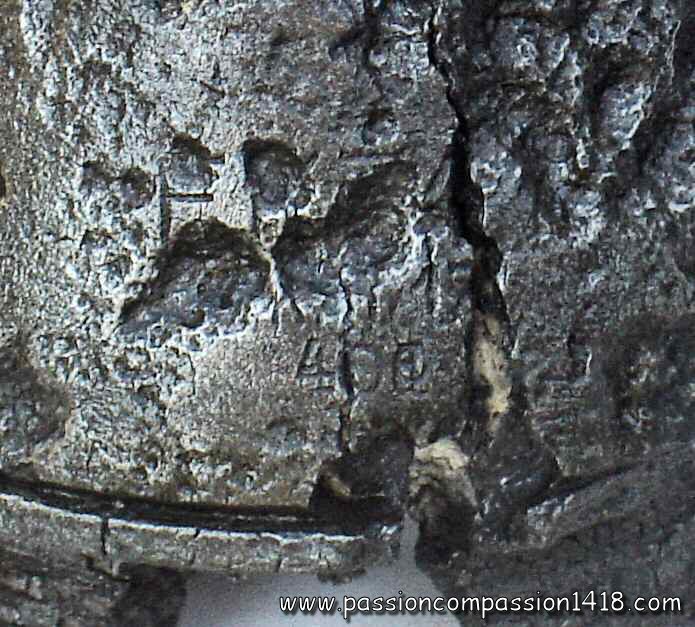 |
Introduction Choices of materials in peacetime
The constraints of wartime enonomy
RETURN TO THE PREVIOUS MENU
|
That is the case of the German fuzes whose incedible models variety combines with an evolution of the metallic materials used that reflects the difficulties of a country at war and submitted to a maritime blockade encounters to equip its armies with efficient ammunitions in sufficient amounts.
Particularily in comparison with their French equivalent equipments, the German fuzes were often massive and heavy items (up to 1.5 kg for instance for the HZ14 percussion fuze), participating to the shell balance on its trajectory. Classically, the material used for their body manufacturing was, like in all other nations,
initially bronze (copper and tin alloy, generally in proportions close to 85% / 15%)
then mostly brass (copper and tin alloy, generally in proportions close to 60% / 40%),
and sometimes aluminium or steel (like in the Dopp Z 96 time and percussion fuze, ou la HZ 05 time and percussion fuze).
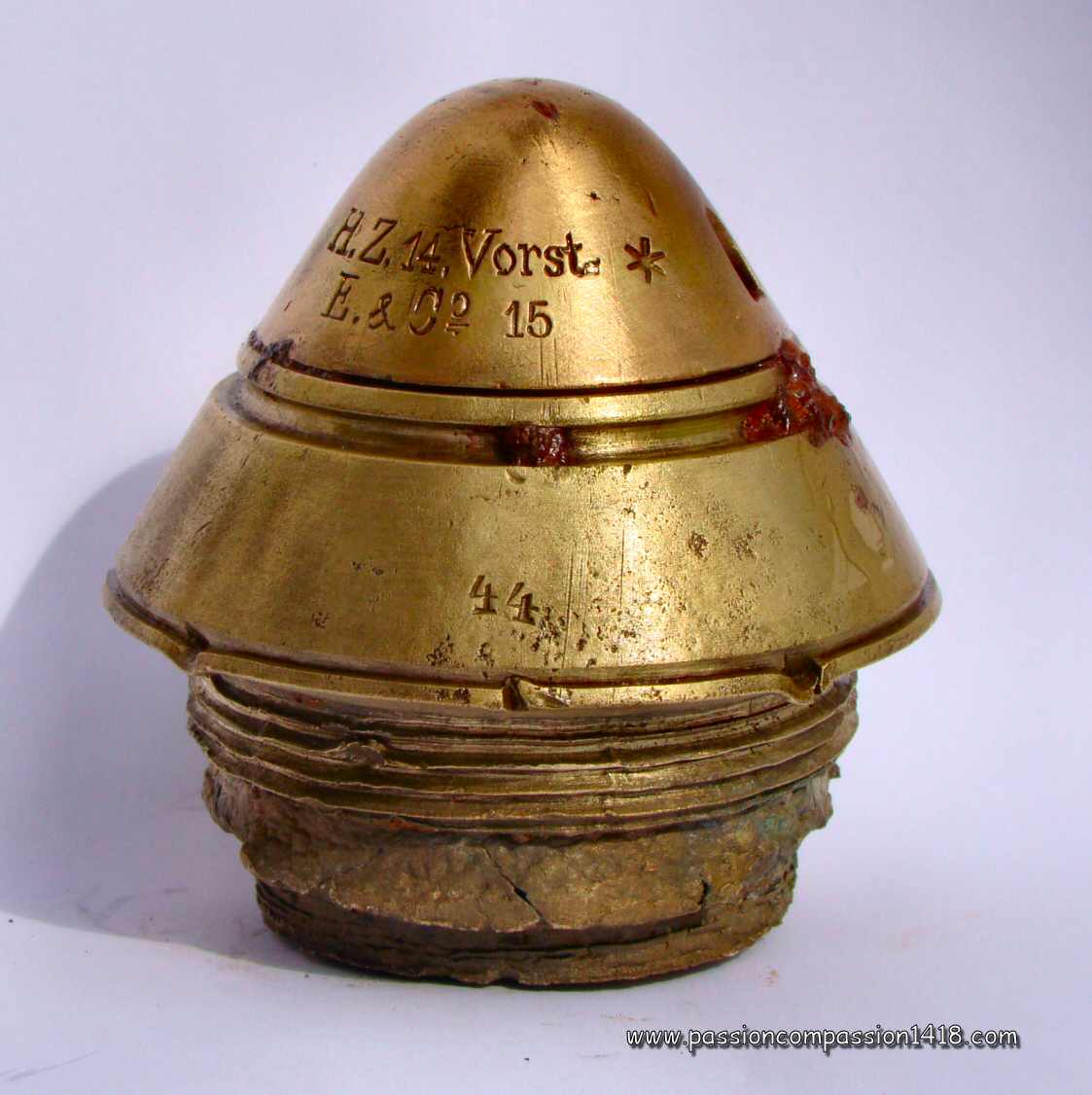 |
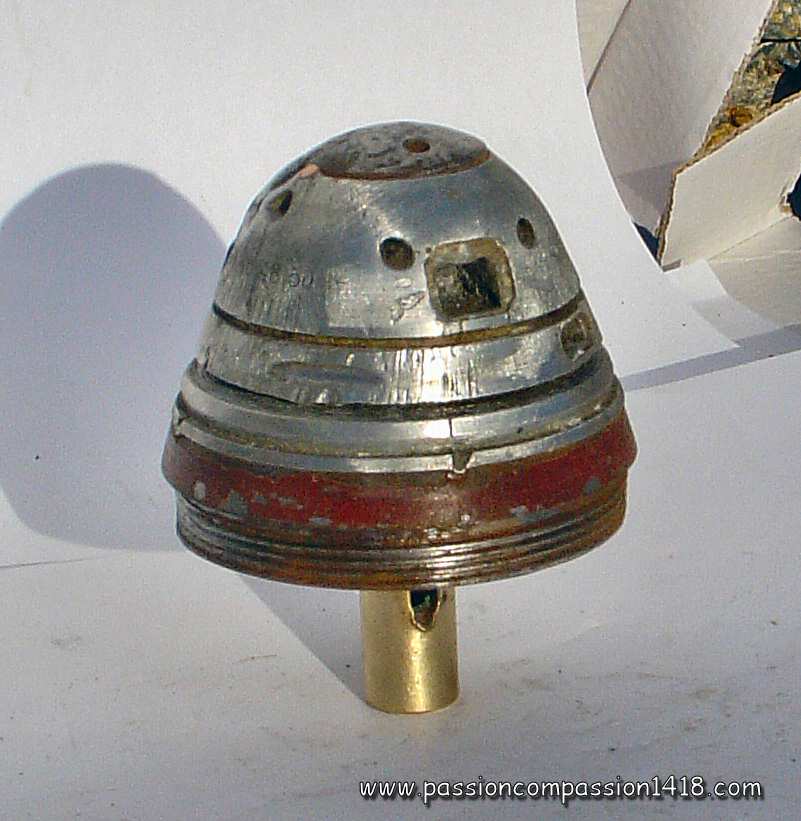 |
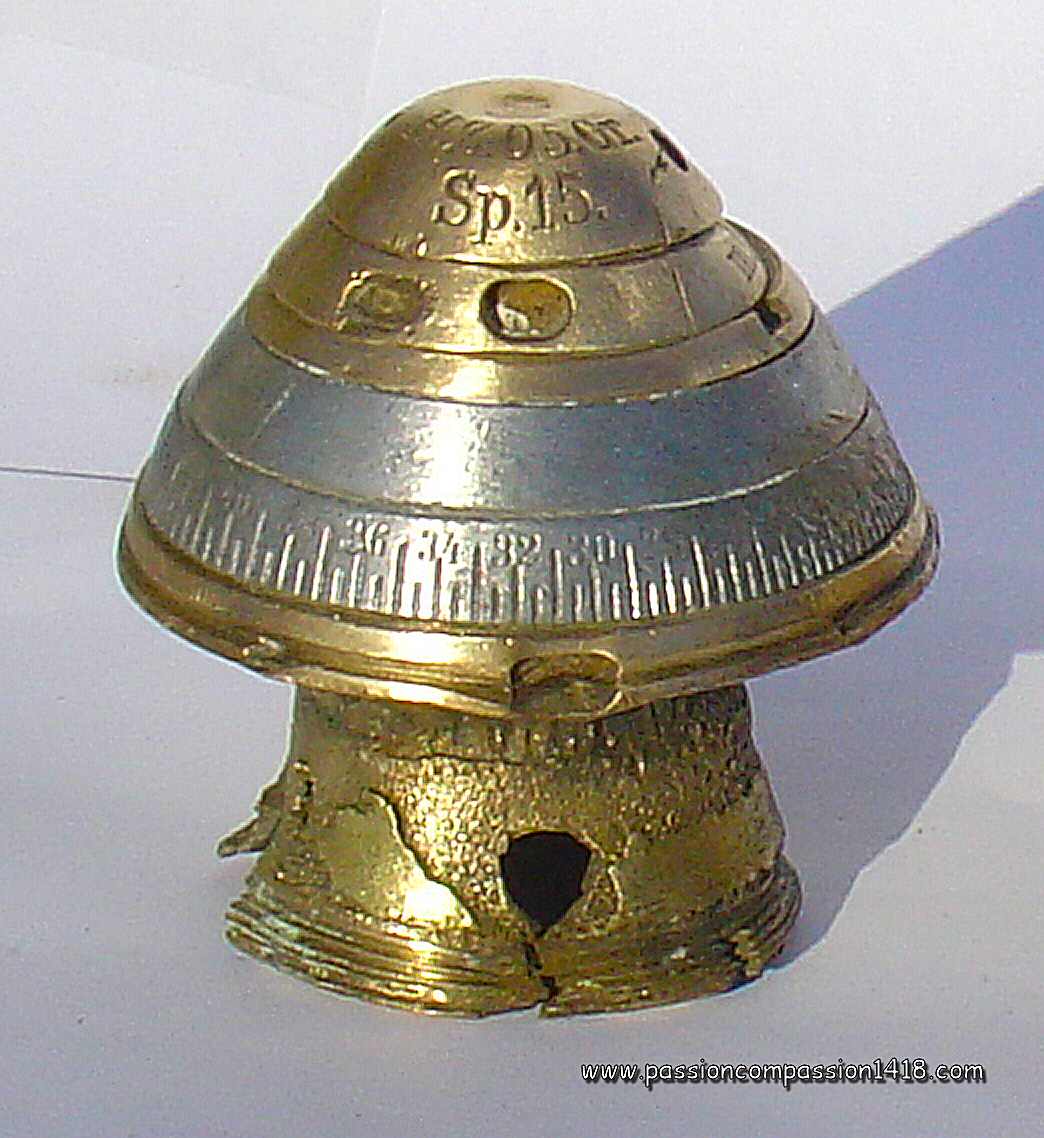 |
| The heavy HZ14 percussion fuze for the 10.5cm light field howitzer, entirely made in brass, was wrighing more than 1.5 kg | The Dopp Z 96 time and percussion fuze of the 7.7cm FK96 light fieldgun, invented in 1896, was light with aa aluminium based design for the discts, and steel for the inner body and the cap. | The HZ 05 time and percussion fuze for the 10.5cm light field howitzer, designed in 1905, was having a brass body, aluminium discs, and a brass cap |
The noble copper alloys were providing the upsides of a pretty easy fabrication by casting, a nice machniability, petty good mechanical properties and an excellent resistance to corrosion. Aluminium was having the same two first advantages, with an interesting light weight but much lower corrosion and mechanical properties. Steel was sometimes preferred specifically for the top cap, due to its far better mechanical resistance that allowed to protect the fuze inner mechanisms when hitting the target..
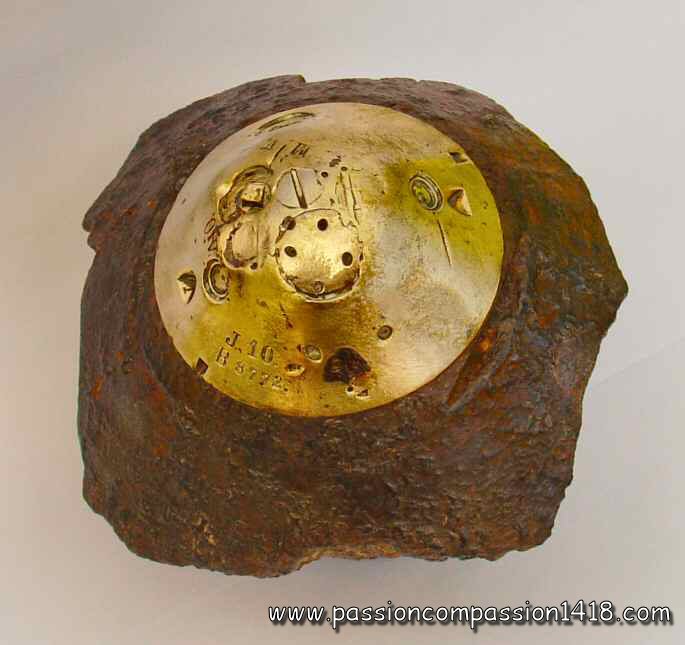 |
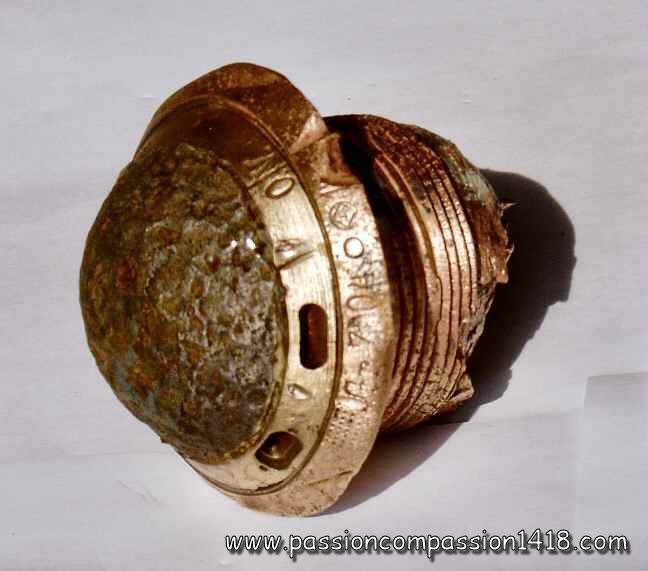 |
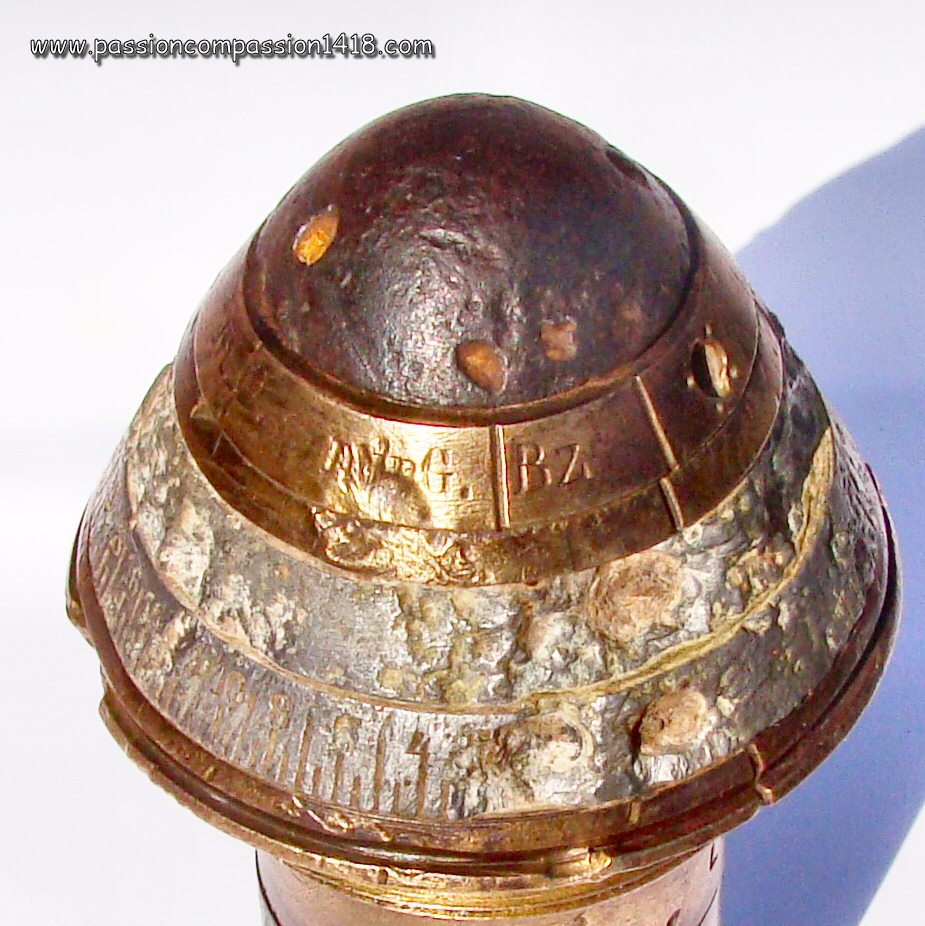 |
| The composition of the GrZ96/04 percussion fuze for the heavy industry was mainly brass, heavily machined up to the cap that was presenting vents, openings and the delay programmation devices. | The design of the GrZ04 percussion fuze that cam as a successor of the GrZ96/04 at the left was clearly modified to reinforce the fuze resistance to the landing shock, the delay programmation devices being now accessible by the rotation of a brass disc protected by a steel cap. | On this model of the HZ 05 time and percussion fuze manufactured in 1915, the brass cap have been replaced by a steel cap, more resistant to the target hit. |
As early as the first months of the war, the increasingly from the beginning of the positions and siege war, the artilelry started to require huge amounts of ammunitions of all calibres, heavily sollicitating the war industry of the fighting countries soon helped with mobilzed private industry. While France and Great Britain kept a relatively easy access to the copper and other metals mines of their vast colonial empires, Germany was rapidly submitted to a strict maritime blockade, cutting the access to its rare colonies and foreign providers.
Therefore this nation quick had to find the huge quantities of copper needed for its war fabrications from other channels completing its parce own continental natural ressources and stocks : looting the occupied countries (for instance the church bells), collecting the metallic pans and decoration items, and intensive recycling of the used cartridges and fuzes gathered on the battlefields. The use of these devices as souvenirs and base for trench artwork was strictly prohibited in the German Army and severly punished.
From 1915 - 1916, with the war continuing, these alternative copper sources proved insufficient and one started to see increasing quantities of fuzes manufactured with less noble metals but more abundant and cheaper. It is remarkable to observe that all the new German fuzes designed introduced after 1915 are made with less and less or no brass, replaced by more common materials.
This is how the following materials were progressively introduced :
low alloyed aluminium (92 % aluminium, 5% tin, 2% copper)
zinc alloys with different compositions (for instance 90% zinc, 4% copper, 3% aluminium, 1% lead) and having poor and variable properties
Zamak, in German "Zink, Aluminium, Magnesium, Küpfer" in classic proportions 94% zinc, 4% aluminium, 1% copper;
steel (97% ironr, 1% manganese, 0.5% carbon plus some alloy element in small proportions such as nickel, chrome or wolfram)
Apart from steel, these less noble materials were easy to cast thanks to a very low melting temperature. Also, their machinability was really good, as well as their recyclability. On the other hand, they presented poor corrosion resistance properties. If that latter characteristic was not acceptable in peace time when ammunitions had to be stocked for long periods in depots, it was less crucial in war time when shells and fuzes were almost used by the voracious artillery units as quick as they were produced.
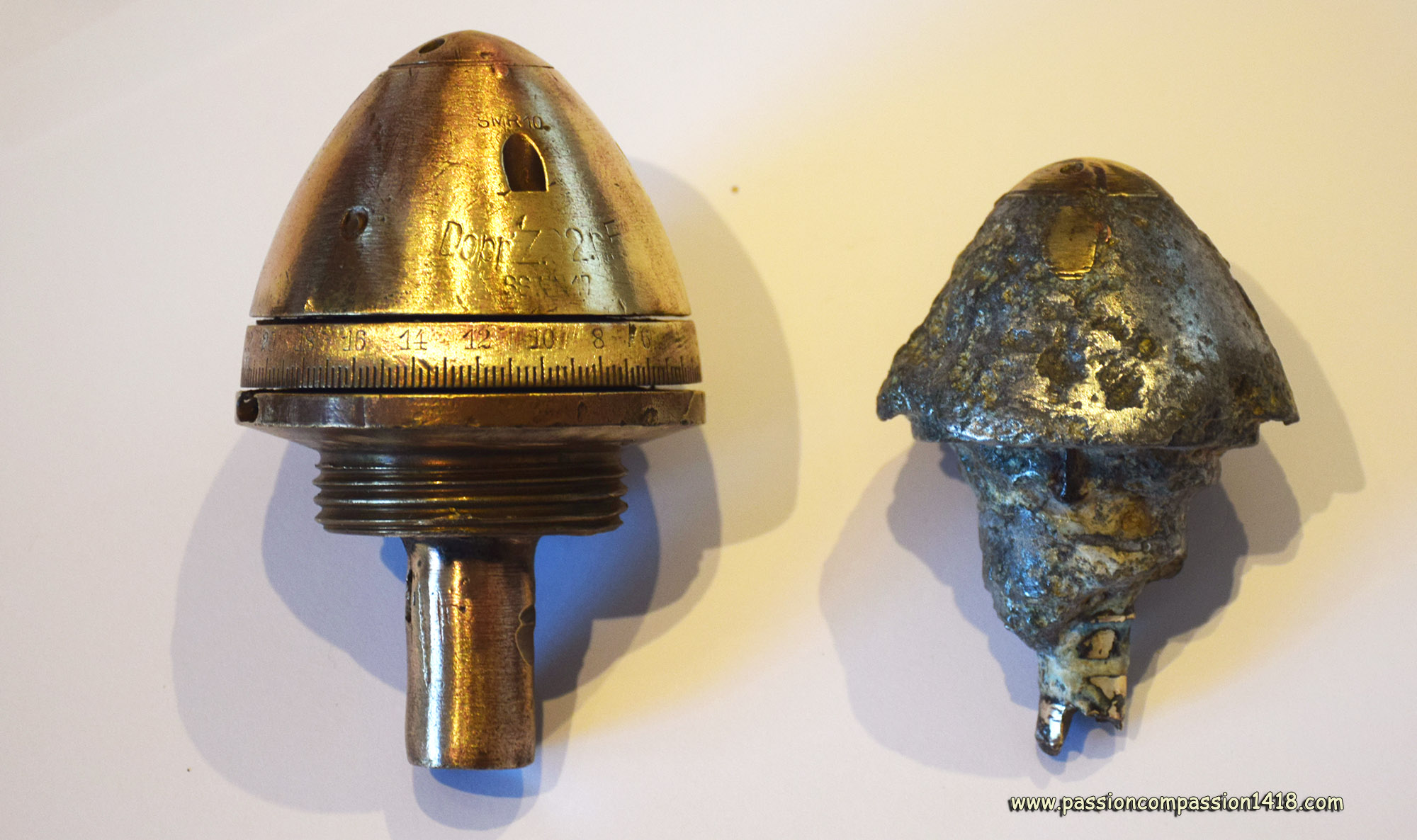 |
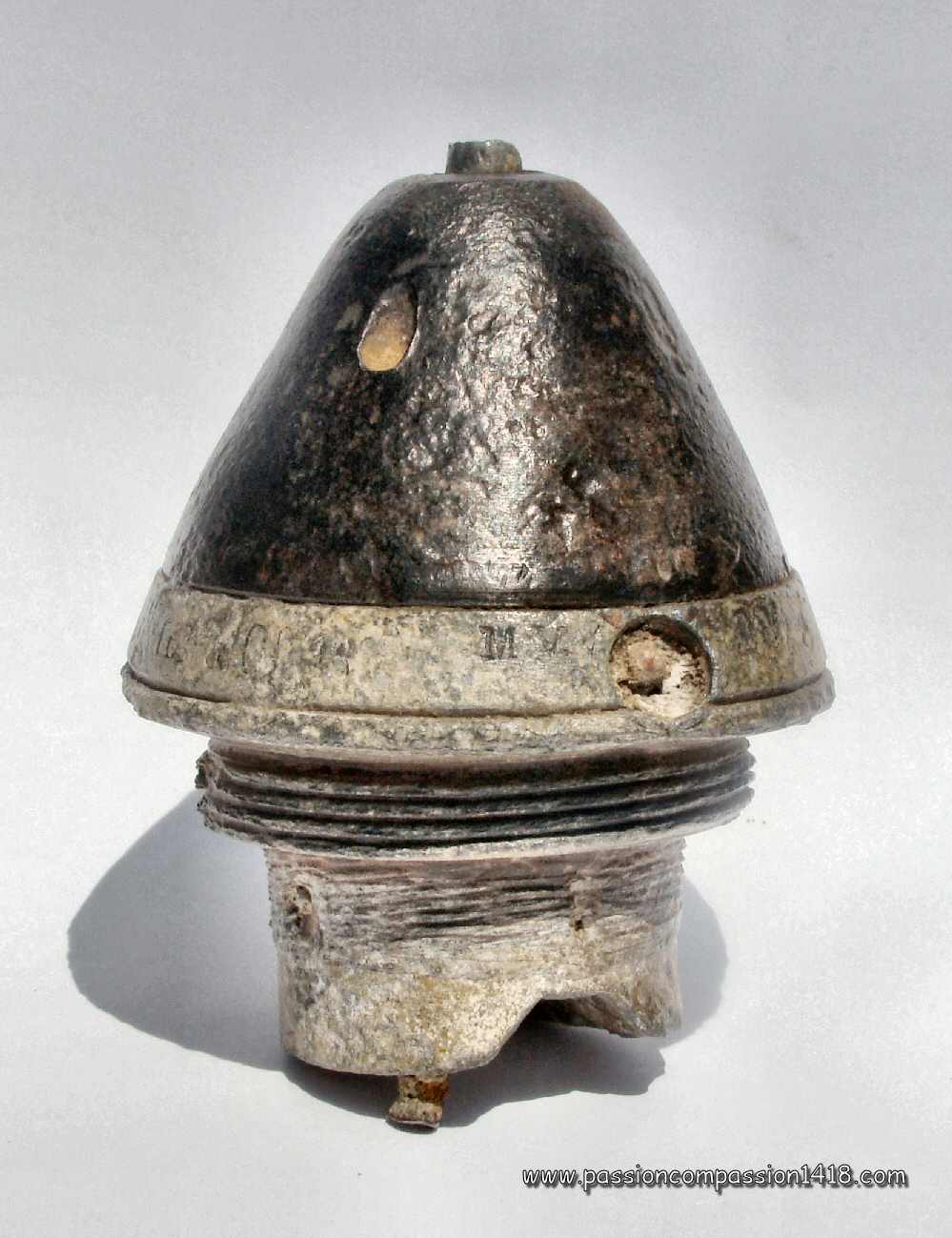 |
| The difference of corrosion resistance properties between brass and less noble materials is evident when comparing these two items of Dopp Z92nF time and percussion fuze found on the battlefield more than 100 years after their use. | This EHZ16 percussion instant fuze was dewsigned in 1916 and from the origin meant to be produced from steel and zinc alloy. |
The 7.7cm fieldgun KZ14 percussion fuze is probably the one that has been manufactured with the largest combination of different materials during the whole war, although its design was only dating 1914 and based on brass. This is demonstrated in te following picture :
Some fuzes made of zinc alloy were sometimes receiving a marking incicationg its composition. For instance, when it was manufactured with zinc alloy, the KZ14 percussion fuze could be stamped :
"KZ 14 Z",
"KZ 14 Zl",
"KZ 14 Zp",
"KZ 14 Zw"
ou "KZ 14 nA Zl"
The war economy of the German Empire in war and under allies blockade also induced its military engineers to simplify increasingly the design of their fuzes in order to decrease their manufacturing complexity hence their cost, sometimes detrimentally to their safety or reliability. This evolution towards simplicity is well demonstrated int this website pages dedicated to the fusées allemandes presented in chronologic order.